Osteoarthritis is a chronic and degenerative disorder that primarily affects older people. It primarily affects large joints.
Symptoms may be minimal in early or mild Osteoarthritis. However, in moderate to severe osteoarthritis, the disease can be very disabling.
It may totally restrict a person’s mobility. Patients with moderate to severe osteoarthritis usually become dependent on family members and friends for daily household activities.
Osteoarthritis affects the cartilage of joints and is characterized by the loss of joint cartilage, narrowing of joint space, bone hypertrophy, and the development of bony overgrowth at the margins of joints known as spurs. It occurs when the cartilage of bone wears down diminishing its adhesive properties.
It can affect any joint of the body but most commonly affect the large joints of the body. Commonly involved joints are:
- Hip joint,
- Knee joint
- Shoulder joint
- Cervical & lumbar spine
- Joints of fingers
| You may also like to read: |
Characteristics of Osteoarthritis:
- OA leads to joint instability and a restricted range of movements.
- Muscle contractures develop as the disease progresses.
- Repeated stress or continuous minor stresses cause mechanical injury to the joint.
- Prolonged immobilization of the joint causes rapid destruction of articular cartilage.
- Osteophyte formation occurs that may result in damage to the surrounding ligaments and neurovascular bundle.
Who Are At The Risk?
Osteoarthritis can affect people of all age groups, but people of age group above 65 years are at higher risk of having this disease because of degenerative changes that occur with age.
Studies indicate the fact that one in two adults will suffer from osteoarthritis at later ages.
Risk Factors for Osteoarthritis:
- Increasing age
- Obesity
- Weak thigh muscles,
- Excessive use of bones & joints
- History of bones or joint injuries or traumas
- People with underlying diseases like storage disorders, hemochromatosis, Wilson’s disease, and pseudogout.
- Family history of osteoarthritis
| You may also like to read: |
Why do You feel Severe Pain In Osteoarthritis?
In healthy joints, cartilage act as a shield for bones articulating together, it covers the end regions of bones facilitating smooth gliding movements.
It acts as a soft cushion to prevent wear and tear of joints articulating with each other.
In osteoarthritis, this cushion or cartilage breaks down causing inflammation, and pain during joint movements.
Which Kind Of Osteoarthritis Do You Have?
There are two main categories of Osteoarthritis:
- Primary Osteoarthritis
- Secondary Osteoarthritis
Primary Osteoarthritis:
Primary OA is localized to a few joints, it has subdivisions based on the site of involvement like hands, feet, and hip joints.
However, if primary OA involves more than one joint it is known as primary generalized OA. Primary Osteoarthritis is the most common and affects primarily older people. It is also called idiopathic osteoarthritis since there is no underlying cause.
Secondary Osteoarthritis:
Secondary OA mainly occurs due to the factors that change the biochemistry of articular cartilage. It is usually secondary to an underlying disease that results in joint damage.
Causes of secondary osteoarthritis include:
- Trauma especially repeated trauma
- Metabolic disorders such as storage disorders, amyloidosis, Wilson’s disease, hemochromatosis, and pseudogout.
- Infection of the joints (patients with a history of septic arthritis in the past)
- Endocrine disorders such as thyroid disorders and acromegaly
- Neuropathic diseases include Charcot joint, and
- Disorders that change the normal function of hyaline cartilage.
Therefore, moderate to severe osteoarthritis may result in bone breakdown resulting in the formation of small growths known as spurs.
In patients in the advanced stages of moderate to severe osteoarthritis, severe pain may accompany joint swelling and restricted movements.
| You may also like to read: |
Signs and symptoms of OA
Symptoms are initially mild but get severe as the disease progresses;
- Morning stiffness in or around involved joints usually lasts less than 30 minutes.
- Pain after movements
- Muscle weakness around the involved joint.
- Decreased joint flexibility
- Swelling may occur around the joint
- Increased joint pain with weight-bearing activities
- Limited range of motion and restricted movements.
- Crepitus or crackling sounds on flexing or extending the joint
- Tenderness may occur if the joint is inflamed.
How to diagnose Osteoarthritis?
When you feel constant stiffness and pain in your joints & the pain gets worse at the end of the day, and you need to see a doctor for a proper diagnosis of your problem.
Although OA is diagnosed solely based on your symptoms and signs, investigations like X-rays of the joints are required to confirm and see the severity of the disease.
Occasionally, an MR (magnetic resonance imaging) may be required to see the severity of the disease. MR is especially useful before surgical intervention is performed or when the diagnosis is not clear.
Other tests may be required to look for the underlying co-morbid conditions including diabetes, dyslipidemias, anemia, hyperuricemia, and heart and kidney disease.
If you have OA at a young age, you may also require further investigations to look for the underlying cause of OA. Causes of OA at a young age include:
- Pseudogout
- Hemochromatosis
- Wilsons disease
- Hypoparathyroidism
- Acromegaly
- Diabetes
- Amyloidosis
Some researches indicate that it’s an irreversible disease that is not manageable, however, you need to manage your symptoms like pain, inflammation, and stiffness thus improving joint range of motion and flexibility.
Maintaining an ideal body weight is very important. Obesity is one of the risk factors for osteoarthritis at an early age. Reducing weight significantly improves your symptoms.
Physical activity is effective for healthy and pain-free joint movements.
Osteoarthritis restricts a person’s mobility. A sedentary lifestyle is a risk factor for major illnesses including diabetes, cardiovascular diseases, hyperlipidemia, hypertension, and stroke.
| You may also like to read: |
Role Of Diet In Osteoarthritis:
A balanced diet plays a vital role in treating the symptoms. Some foods have anti-inflammatory properties that help in reducing symptoms. These include:
- Dairy products (milk and yogurt)
- Dark leafy vegetables
- Green tea
- Fish
- Nuts must be a part of your routine diet
Effective healthy eating habits and physical activity can help to reduce the severity of osteoarthritis
Rehabilitation Plan for Patients with OA
It is important for people with osteoarthritis to know their disease. Osteoarthritis is not curable. You can manage only your symptoms. Some people aim for a complete cure and try various medications that may be harmful.
Furthermore, it is best to take the safest pain medications. Avoid taking too many pain-relieving medications and especially steroids. Avoid repeated injections in your joints.
Pain Management
Early Osteoarthritis:
As movement relieves the feeling of stiffness, so it’s necessary to maintain a balance between activities and rest.
Reduce mechanical stresses during weight-bearing and walking. It can be achieved while shifting weight during walking and equal weight distribution.
Moderate to severe Osteoarthritis:
People with longstanding osteoarthritis and those with moderate to severe disease often feel pain at rest.
Activity modification and using assistive devices may be necessary at this stage to minimize mechanical stress. Splints may be used to reduce joint stress.
Use acetaminophen or acetaminophen and codeine combination for mild to moderate osteoarthritis.
Advil, naproxen, Aceclofenac, Meloxicam, Celecoxib, or Etoricoxib are all Non-steroidal anti-inflammatory drugs that may be used to treat moderate to severe osteoarthritis.
Biofreeze Gel has been clinically approved for being used in the pain management of Osteoarthritis.
| You may also like to read: |
Supportive devices:
Supportive devices i.e. cane, walker, and English seat toilets may be needed to minimize pain and maintain the activity of daily living.
The use of shock-absorbing footwear is suitable to reduce stress on knee joint OA.
Patients with hip or knee OA can limit the intensity of pain and improve walking, with aquatic exercises.
Resistance exercises for moderate to severe Osteoarthritis:
- Lie straight on the ground.
- Keep both legs straight & fully extended.
- Take a rubber band and put it on both legs.
- Now keeping the unaffected leg straight in place, move the affected leg outwards against the resistance of the rubber band hold it for 10 seconds, and bring it back to the original position.
- Perform 10-20 repetitions.
- Perform Resisted knee flexion
- Resisted hip flexion and extension
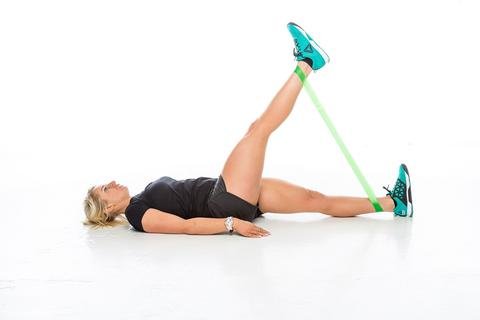
You may also like to read:
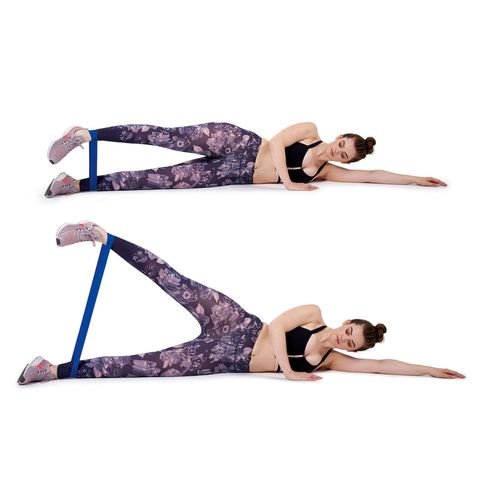
| You may also like to read: |
Isometric exercises for moderate to severe osteoarthritis:
Isometric exercises are highly beneficial for knee pain and preventing knee contractures.
- Lie flat on the ground with both legs fully extended.
- Now Bend the opposite knee in a way that feet are placed flat on the ground, to avoid pressure on the back.
- Take a physioball or a rubber ball of medium size and place it under the knee joint.
- Press the ball by pressing the knee over the ball to the maximum strength.
- Try to maintain the stress for a minimum of 5-10 seconds, and relax.
- Perform 20 repetitions minimum to get better results.
- It’s the safest exercise for knee pain
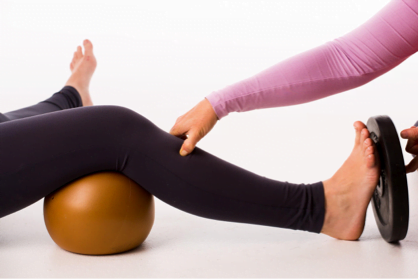
| You may also like to read: |
Stretching and joint mobilization for OA
Hamstring Stretch/SLR (straight leg raising):
- Lie on the ground with the back flat on the ground and legs or knees fully extended.
- Keep one leg bent and lift the other leg in the air,
- Put a rubber band around the sole of the foot and stretch towards your belly,
- Hold this stretch for a minimum of 30 seconds and do 5 repetitions maximum.
- This stretch is quite useful for accomplishing tasks of daily living such as walking upstairs and bending activities etc.
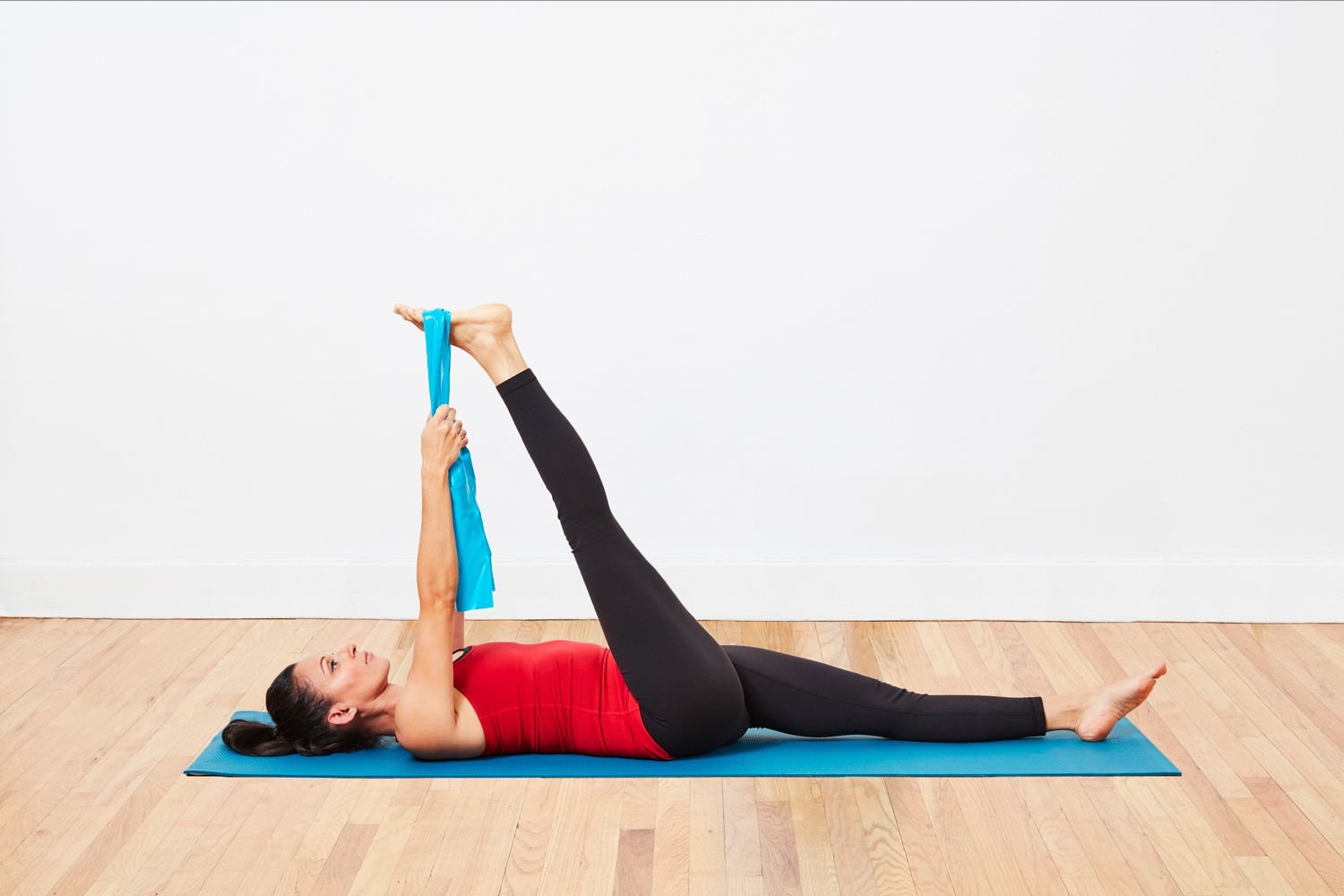
Calf Stretch:
- Stand in front of a wall or back of the chair in such a way that one foot is placed close to the wall and the second foot is placed behind the front foot.
- Keep the knee of the front foot slightly bent.
- While keeping the knee of the other leg placed behind, straight with foot placed flat on the ground, lean your back towards the wall.
- You will feel a gentle stretch in the back of your leg.
- Hold this position of stretch for 20secs.
- Relax and repeat again.
- Perform this stretch twice a day.
- It will release tight calf muscles and reduce the pain that you experience during walking.
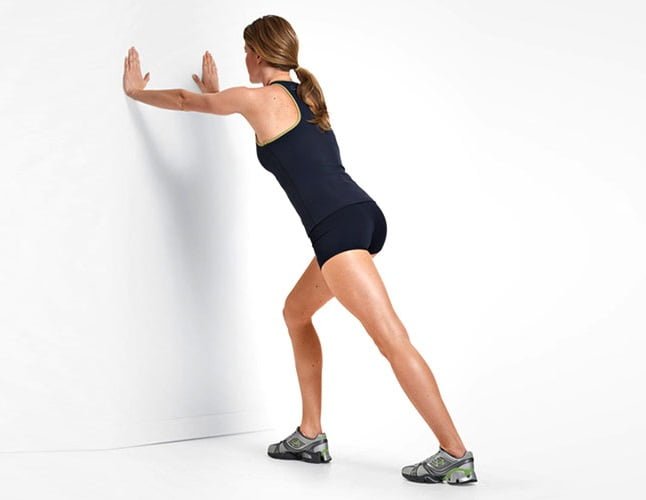
| You may also like to read: |
Pillow Squeeze:
- Lie straight on the floor.
- Keep both knees fully bent, with feet placed flat on the surface.
- Arms are placed on the side of the body.
- Take a medium size pillow.
- Place the pillow between your bent knees.
- Press the pillow with both knees using maximum force.
- Hold the press for 10 secs, relax and repeat again.
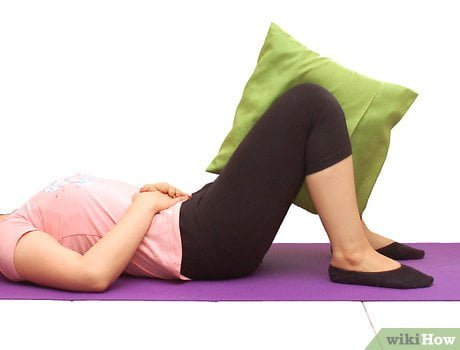
Side Leg Raise:
- Stand straight while holding the backside of a chair.
- Keeping both feet flat on the ground.
- Raise the affected leg sideways i.e. outside the body.
- Keep the raised leg in the air for 10secs.
- Perform this exercise minimum of 10 times.
- These techniques are helpful in increasing joint mobility.
- The patient can perform self-stretching exercises as prescribed by his\her therapist.
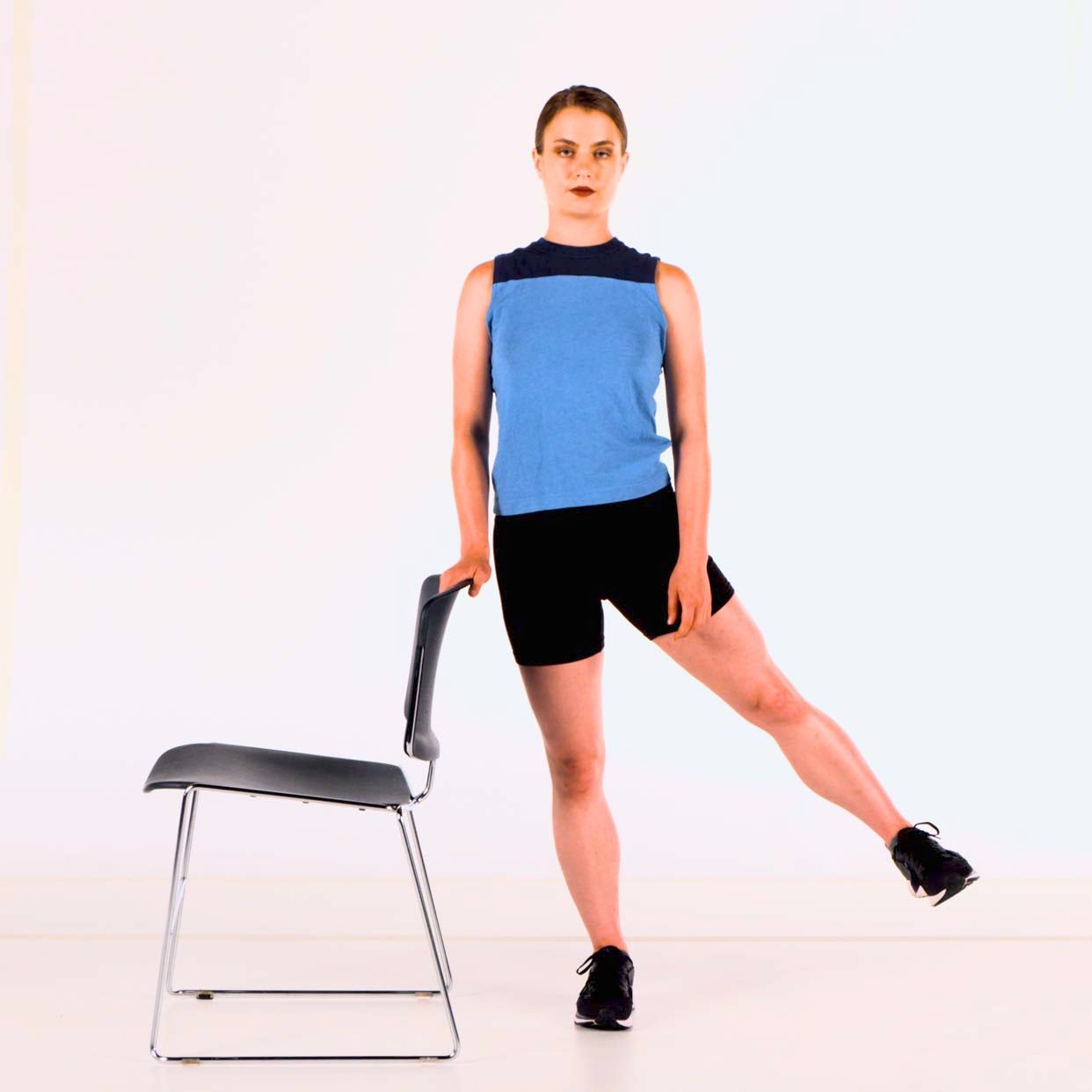
| You may also like to read: |
Improve balance
Using balance training activities, you can improve walking and stability.
- For improving balance and stability, you can perform step-up and step-down exercises, as these exercises will have a great impact on strengthening the muscles of the lower limbs.
Single-Leg Standing exercises:
- Stand straight while shifting the whole body weight to one leg, and raise the other leg, with the knee bent.
- Stand on a single leg for 10-20 secs.
- Bring the bent leg back to the starting position.
- Repeat again.
- Perform 10 repetitions twice a day.
Knee Cap:
To perform activities of daily living without pain, a knee cap is necessary to wear on the knee joint.
- The open patella knee cap is highly recommended
- It Restricts the Undue movement of the patella.
- Reduce friction between joints.
- Provide compressive force to muscles that are highly beneficial in reducing pain during physical activities or walking.
| You may also like to read: |
Hip Abduction and Adduction exercises:
- Lie straight on the floor.
- Bend the unaffected knee to reduce stress on the back.
- Keep the affected leg/knee fully straight on the floor.
- Move the affected leg sideways i.e. towards the outside, keeping the knee straight facing the roof.
- Bring the leg inwards back to the starting position.
- While moving the leg outside or inside, make sure to lift the leg a little, off the floor and then perform this exercise.
- Perform 10-20 repetitions as per convenience.
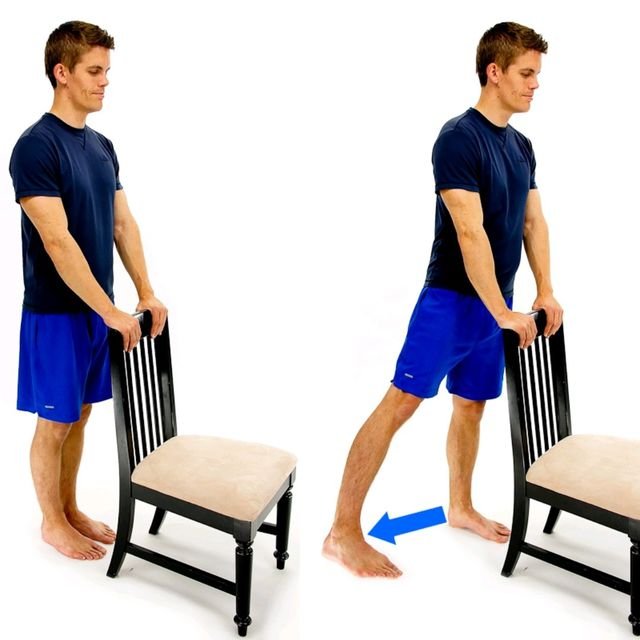
| You may also like to read: |




